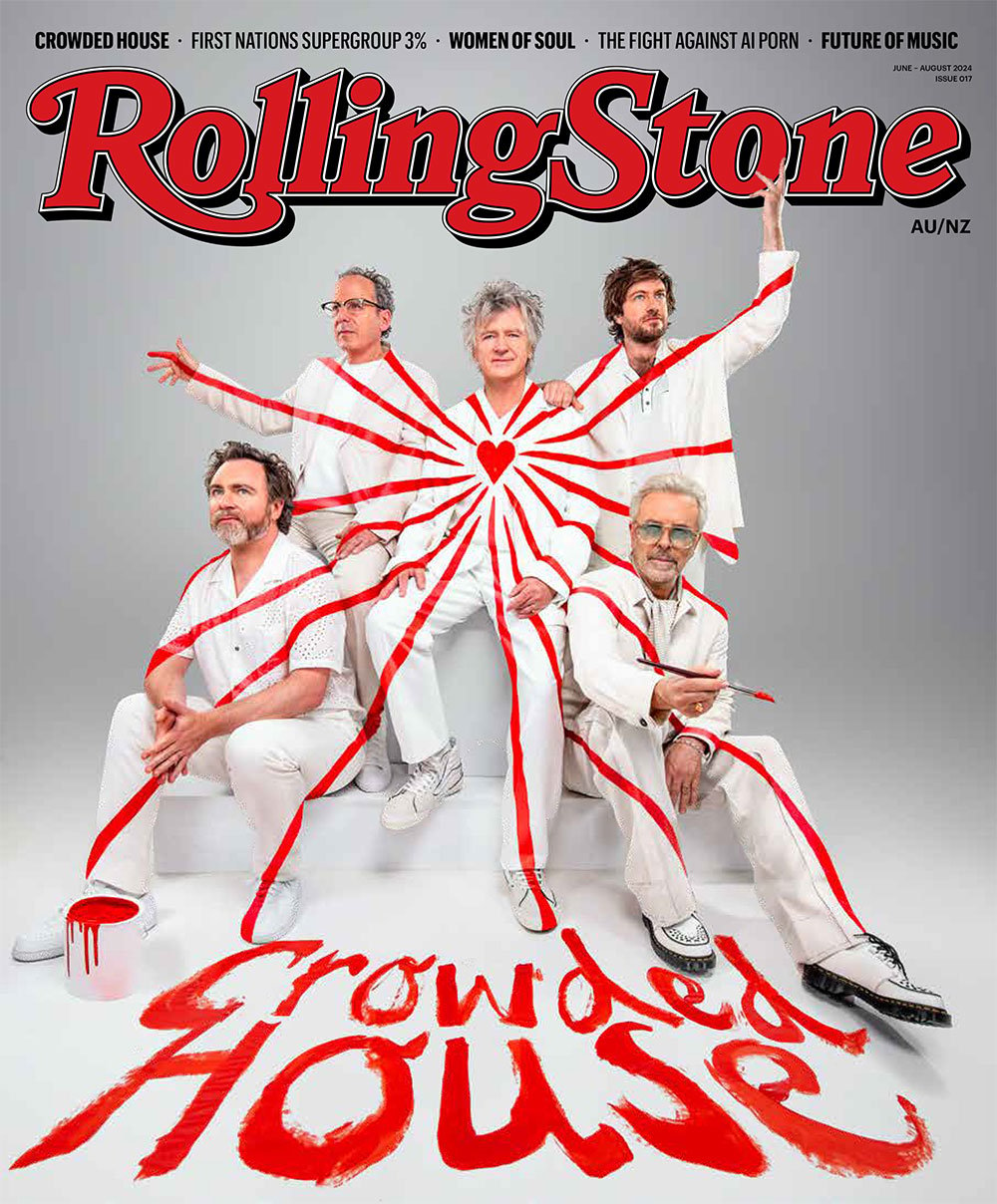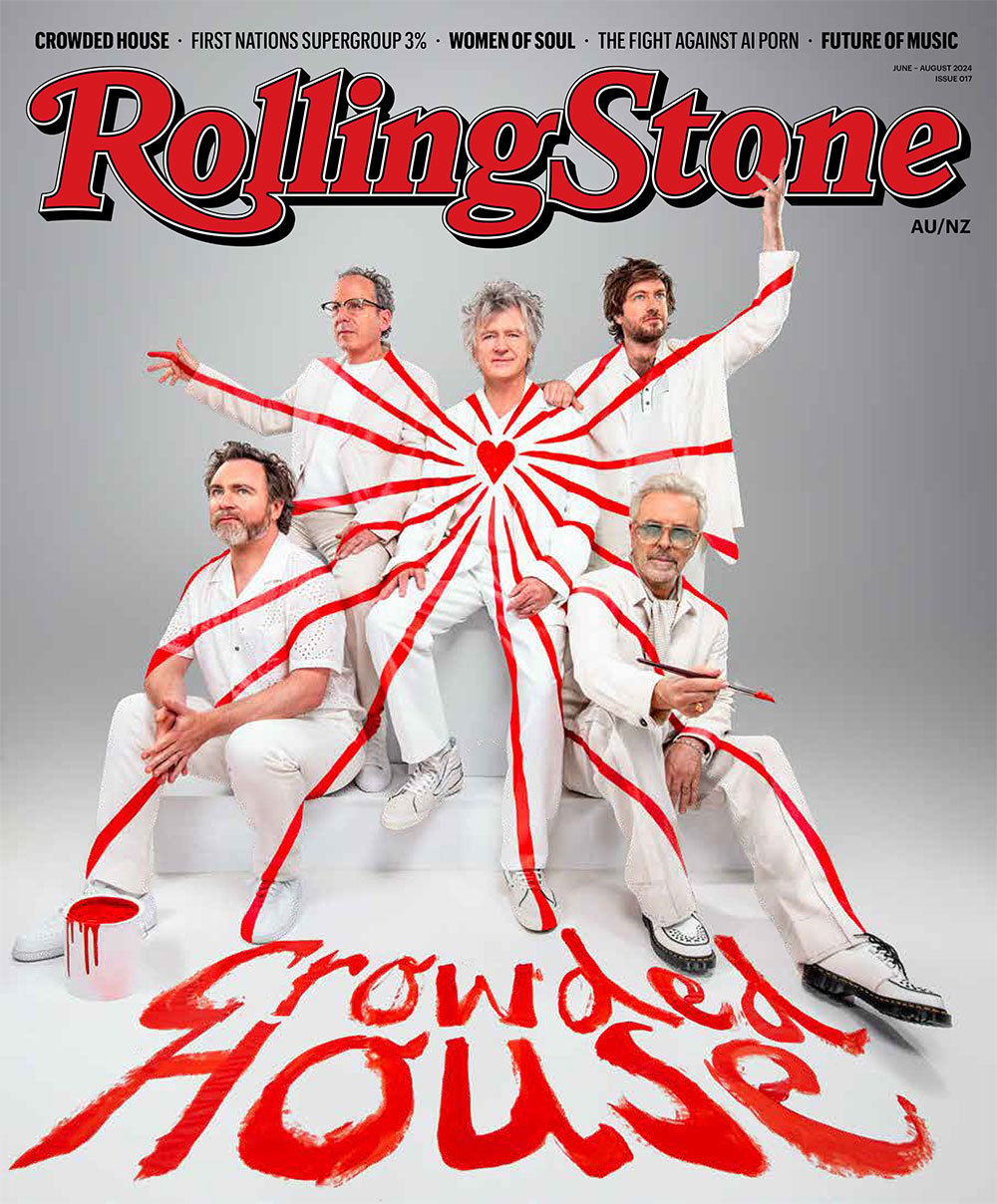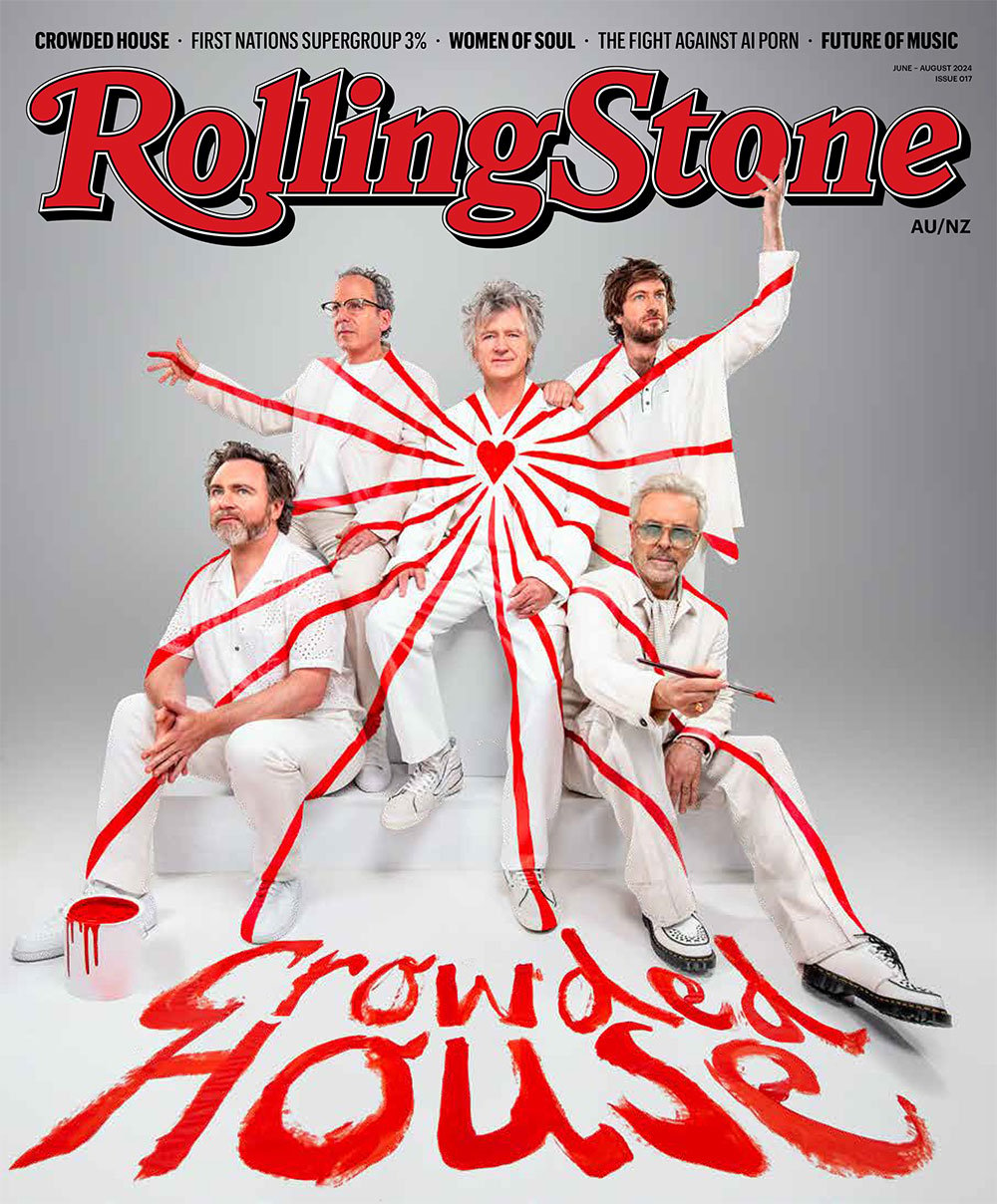In late 1974, Michael Browning was booking bands into Melbourne’s Hard Rock Cafe and searching for the act that he’d help propel to international stardom. That band, featuring a manic guitarist in schoolboy’s clothes and a wild-eyed frontman with a cockatoo tattooed on his forearm, rolled up to the Hard Rock, broke, manager-less and desperate. Soon, AC/DC would be on their way.
The band’s finances were in an appalling condition when I became their manager in late 1974; it was the first thing that needed sorting out. Part of my deal with them was to shift their base to Melbourne. Then I put all the guys on a wage of $60 per week for the next six months. With these two objectives accomplished, things started to stabilise for the band.
Sixty dollars a week may sound laughable, but in 1975 it provided them with food, cigarettes and booze, their basic necessities. I covered all expenses, which included, but were not limited to, equipment, transport, accommodation and the road crew. It worked well, but if they ran short, there was always Angus. Being a non-drinker he would be cashed up; in fact, Angus was like the band’s very own banker, a regular Milburn Drysdale (of Beverly Hillbillies legend). He’d give out loans to support the other members’ drinking habits. I found out that he had a long history of being a good saver, ever since he was a kid and craved his first guitar, which he bought with his own money.
I’d receive all the income from gigs, which would (hopefully) offset my costs and, with a bit of luck, perhaps generate a small profit. After a six-month ‘trial’, I’d be on a straight 20 per cent commission of the gross income from then onwards. Naturally, I was highly motivated to get things going fast.
Although there was good word of mouth spreading about the band, the early performances were to a very small group of dedicated fans, probably no more than 50 punters. The fees ranged from $200 to $500. But the number of patrons had no impact on the band’s performance; they gave 100 per cent whether they were playing to 50 or 5000.

GIRLS, GIRLS, GIRLS – Bon Scott, Moorabbin Town Hall c.1974
Fortunately, Bill Joseph, my business partner, was flush with funds. Bill was a veteran of the Melbourne scene and had been the original manager of Bon’s old group The Valentines. Bill may even have had something to do with those puffy shirts they had worn, although I never dared ask him. Bill was also my partner in the Hard Rock. So we had a number of venues that we could slot AC/DC into, and, boy, did we make them work – expenses were mounting up. Between late January and mid-April 1975 they played the Hard Rock perhaps a dozen times, and then another seven times in May alone, along with regular gigs at the Station Hotel and elsewhere.
At Bon’s suggestion, and with the help of Ralph – a faithful old friend and roadie of Bon’s from the Fraternity days – we purchased a bus that we could convert into a touring van, for about eight grand. It was an old 1950s Ansett Pioneer Clipper Coach with a sloping back; it was similar to one that Fraternity had owned. It looked great. Bon’s thinking was solid: the bus would accommodate the band and the crew, and house the equipment in a discrete compartment at the back.
This was great in theory but there was one problem: we’d purchased a lemon. It kept on breaking down. I was writing cheques every week to a garage called Queens Bridge Motors, which was draining away our profits. The bus had no air con or heating; on winter runs the guys would either freeze or huddle together with the female passengers I’d explicitly banned from transporting for insurance reasons. Sometimes they’d be forced to push the bus the final kilometres to their gigs. It wasn’t quite like Thorpey and the Aztecs arriving by chartered plane.
On one occasion, in April 1975, the band was running late for a gig at Melbourne’s Festival Hall, where 5000 screaming girls eagerly waited, hoping to drag them off stage. The bus had broken down and the band was forced to push the damn thing for the final few blocks. When they finally arrived it had been best to give everyone a wide berth for a while. The mood was not great.
Bon kicked in the upstairs dressing room door, while John Wren, the owner of the venue, which had been in his family for years, watched on. (The Wrens had been immortalised by the novel and TV series Power Without Glory.) John was extremely unimpressed and placed an immediate ban on AC/DC.
“You’ll never play here again,” John told the guys.
Then I pointed out how much money John stood to make, and he backed down. Five thousand screaming fans amounted to some serious change. The band played Festival Hall throughout 1975 and filled the place every time.
Their 1950 Clipper bus finally conked out, conveniently and very suspiciously, in the car park of Canberra Airport. The band, who’d had a gutful of the thing, waved farewell to the old lemon for the last time and caught a plane back to Melbourne – at my expense. Someone eventually tracked me down and made an offer to buy it for a miserly sum. I wasn’t about to have it towed to Melbourne, so that was it, although it’s since been traded for way more than it’s worth on the basis of its place in AC/DC history.

BOTTOMS UP – Michael Browning, second right, and AC/DC in the UK in 1976.
One of the more interesting rumours to emerge from my early days with AC/DC was that I’d banned the guys from wearing watches. Apparently, I was working them so hard that I didn’t want them to be aware of the time, which is laughable, absolute nonsense. It’s true that I didn’t like the guys wearing watches, but that was because of my beliefs about ‘star quality’. Growing up as a fan, in awe of the rock star image, I wanted to believe that rock stars lived beyond the daily grind, with no dividing lines between art and life. I never saw Jimi Hendrix wearing a watch – if he did, it would have appeared as if he was bound by the constraints of time. No free spirit wore a watch in my book. As H.G. Wells once said, “We must not allow the clock and the calendar to blind us to the fact that each moment of life is a miracle and a mystery.”
I also discouraged the guys from using public transport, for the same reason. After all, you didn’t see Elvis Presley or Mick Jagger catching a bus home from the recording studio; that would have totally spoiled the rock star aura surrounding them. I was dismayed when I once spotted Melbourne pop duo Bobby and Laurie on a tram. That wasn’t how pop stars should get around, surely. I wanted to install this principle in the band; it was as simple as that.
Yet these stories got twisted to the point where I was made out to be a slave driver, which of course was not true – although, looking back, the group may disagree! They did become the hardest-working band in the country by mid-1975 and it was starting to pay off for them. “High Voltage” was their first Aussie Top 10, in July 1975.
Around this time I lost my Christian name. Everyone in the band simply referred to me as ‘Browning’. It took a bit of getting used to – at first it sounded a little hostile – but the name stuck. Browning it was.
As part of my management agreement, I found the band a sprawling furnished house in the quiet and leafy neighbourhood of Lansdowne Road in East St Kilda. They shared the place with their road crew, Ralph the roadie (and also the bus driver) and Tana Douglas, an attractive young lady who could throw a Marshall amp over her shoulder with ease and mix it with the best of them. As far as I knew, Tana was the only female roadie in Australia.
The house turned out to be ideal for the band, a great place to write and rehearse new material. But as well as having a practical purpose, it fast became the ‘do-drop-in’ for every single wayward groupie, out-of-town muso and off-duty St Kilda hooker. They all joined in the action that was happening there on an almost daily basis.
Malcolm has been quoted as saying that these ‘were some of the happiest days of my life’, which is easy for him to say, as I was paying the damage bills and dealing with the concerns coming from their houseguests’ parents, who were threatening all sorts of physical and legal action.
One distressed father turned up to the house and dragged Bon through the once glorious and now tragically neglected rose garden, in the process knocking out Bon’s front teeth plate, which he’d acquired after his motorcycle accident. The guy literally wiped the smile off Bon’s face. Afterwards, we had to find his plate. We preferred his new smile, for one thing, but there was also no provision in our contract for replacement teeth.
After our first six months together, the band was now required to stand on their own feet, financially speaking, and I reverted to a straight management commission. This meant that the house had to go. It was a good thing, in a way, because it wouldn’t have been long before they were evicted. It had become an eyesore to the locals and a nightmare for the authorities.
Now, oddly enough, it’s a place of reverence, where the same authorities are planning to erect a plaque in the band’s honour. And don’t get me started on Melbourne’s AC/DC Lane; I can’t recall them ever setting foot there. It’s a serious stretch. Swanston Street, or Spring Street, where the Hard Rock was situated, would have been more fitting locations. I can assure you that when AC/DC first set up base in Melbourne, they were hardly the well-respected denizens of the city they are today.
I re-accommodated the band at a motel called the Freeway Gardens in North Melbourne, conveniently located right next to the on-ramp of the Melbourne airport freeway. It soon became the accommodation of choice for every band visiting Melbourne; the owners were happy (at first) to have found a niche for their noisy, two-star cream-brick dump. The traffic noise far outweighed any racket the musos created, making it the perfect new HQ of depravity.
The word spread fast that this was where the action was, and it soon became party central, open 24/7. It was Lansdowne Road all over, but now more discreetly located. I can’t imagine that there’ll ever be a scene like this again. The girls would be lined up around the block, patiently waiting their turn, and the bands wouldn’t disappoint. The only social diseases to be feared could be treated with a dose of penicillin and a quick trip to the ‘Jack Clinic’, which all the bands could have driven to blindfolded. I eventually worked out an arrangement with Dr John, a medico friend of mine, who’d do house calls, keeping an eye out for any other ailments that may have been bothering them. This is how the band became affectionately known as ‘The Seedies’.
Although I was still very much involved with the Hard Rock, my focus and passion had shifted in the direction of the band. Things were building nicely and my thoughts of getting them to the UK grew stronger. There was never any thought of bypassing the UK and heading directly to America. London was the place every muso aspired to. The work permits were easy to get, coming from a Commonwealth country – even easier because we had band members born in the UK. The way we saw it, America always followed London’s trends – if you made it there and gained word-of-mouth and print media exposure, the vibe would eventually find its way across the Atlantic, making the eventual push into the States an easier mission.

DIRTY DEEDS – AC/DC (from left): Phil Rudd, Angus Young, Mark Evans, Malcolm Young, Bon Scott.
As 1975 rolled on, i’d started to develop a very good working relationship with Malcolm. I would run everything by him on a daily basis and he’d then convey things to the band. Apart from being a gifted rhythm guitarist and songwriter, Malcolm was also the business brain behind the band, very switched on as to what needed to be done. He always took care of business. We were a great team.
Bon had been working on some lyrics for a song called “The Jack”: ‘She was 9-99 on the clinical list and I had to fall in love with that dirty little bitch.’ George pulled Bon aside; he was worried about the blatant nature of the words and urged him to make a change. Bon came back the next day with revised lyrics that illustrated the genius of the guy, who, as well as getting his share of ‘the jack’, was also getting into what I have always thought were amphetamines.
Around this time I got a call from Bon’s girlfriend, letting me know he’d been admitted to hospital, having nearly overdosed on a mixture of booze and amphetamines. By the time I reached the hospital Bon was sitting up in bed as if nothing had happened, flirting with the nurses, who were telling him that he’d been a ‘very naughty boy’.
Bon bragged to me that the last time he’d been in that hospital was to visit two girls – total strangers to one another – who were in the maternity ward having his babies. It turns out that Bon might have been indulging in something stronger than amphetamines. His girlfriend and her friend had dared him – even assisted him – to inject some of their heroin, promising the ultimate high.
Instead of getting ‘higher than he had ever been’, as the girls had promised, Bon plunged into unconsciousness and turned a frightening shade of blue. He was gone. To try to bring him back they injected him again, this time with speed. It didn’t work so the girls dialled triple-O, keeping him upright until the ambulance arrived, when Bon was given mouth-to-mouth resuscitation.
After his recovery and discharge from hospital nothing much more was said. Bon knew only too well the horror the Youngs had experienced with Stevie Wright going down this path.
AC/DC were now permanent residents at the Freeway Gardens, while other bands would come and go. This meant that all good times revolved around the AC/DC quarters. They really held court, led by teetotaller Angus, who’d sit there like Little Lord Fauntleroy, a funny little fucker keeping everyone amused with his pearls of wisdom and humorous one-liners. Angus would be completely sober, chatting away with people who could barely walk, let alone talk. Angus, apart from his guitar wizardry, was a natural comedian, one of the best comedic minds I’ve ever come across.
Bon wrote the lyrics for “Whole Lotta Rosie” after an encounter at the Freeway Gardens. Bon had been attracted to the real-life Rosie for a number of reasons – one of them being that because of her hefty size, she may not have been carrying the dreaded Jack, which he was doing his best to avoid. I thought she was a sweet girl – a sweet girl, that is, who became immortalised in song.
What made the Australian music industry unique during the 1970s was the rise of pub rock, with its HQ in outer suburban beer barns. In order to deal with the ‘dead sound’ of the carpeted rooms, where no thought or planning had been given to acoustics, there was more of an emphasis on a loud snare and kick drum, along with a driving bass and the repetitive guitar riffs. This provided the perfect soundtrack for the hundreds of young drinkers who’d gather at these brick houses. The live music program of these venues had been taken to new heights a few years earlier by the success of Billy Thorpe and the Aztecs and The Coloured Balls. AC/DC also fitted right in.
The punters wanted their rock ‘hard and loud’; ‘suck more piss’ was still their chant, as it had been back when Thorpey was at his peak. These blokes – and they were mainly blokes – weren’t actually listening to the music in the normal sense; they were feeling it, with the help of buckets of booze. They were really into the music, but in a different way to your typical punter.
This beer barn phenomenon wasn’t a strictly Melbourne one. It was happening all over Australia, from the Largs Pier Hotel in working-class Port Adelaide, to Sydney’s western suburbs and Northern Beaches, places like the Sundowner and the Royal Antler, where bands such as Rose Tattoo, The Angels and Cold Chisel would provide the soundtrack.
Not surprisingly, these beer barns could get really rough, sometimes totally out of control. The bouncers always seemed outnumbered by drunken yobs. The bands were often confronted with threats of personal violence from drunken idiots, in the shape of fists in the car park or flying full beer cans – and glasses – while on stage. Angus developed a way of dealing with the chaos; he just kept moving on stage. It was always harder to hit a moving target.
But there were times when it got really frustrating for him. Nothing could put off a blazing guitarist more than a full beer can to the side of the head. One night, after a particularly dangerous show, he pulled me aside.
“Browning,” he raged, “I want you to put up safety nets in front of the stage from now on. I’m sick of dodging beer cans.”
Thankfully, once he calmed down, he forgot all about the idea, which would have been an interesting one to pitch to publicans.
But the beer barns and their rowdy audiences were absolutely crucial in the development of AC/DC’s sound. The experience of winning over the audiences at these tough Aussie venues was something they were able to draw on for their entire career. Making these unruly mobs actually take notice of you, let alone get them on your side, was a massive accomplishment.
AC/DC was about as far away as you could be from the gay scene, but the gay community was initially attracted to them because of their name, which had already caused the disaster in Perth that almost killed the band. When not packing the beer barns, they played the weekly gay nights on the Hard Rock’s rooftop stage. Bon would have a ball camping it up, teasing the gay guys with a whip. Thankfully, this was before the days when Angus started mooning the audience. Who knows what kind of message that would have sent.
This is an edited extract from ‘Dog Eat Dog: A Story of Survival, Struggle and Triumph’ by Michael Browning; published by Allen & Unwin.




























